On Tuesday, three Tampa Bay Buccaneers learned that they had been selected for the 2020 Pro Bowl: outside linebacker Shaq Barrett and wide receivers Mike Evans and Chris Godwin. It's possible that additional Buccaneers will end up on the NFC roster in the weeks to come as players pull out of the game due to injury or advancement in the playoffs. But for now, that's the group that will be representing the Buccaneers about 94 miles up I-4 in January.
Of course, there's a chance that one or both of Evans and Godwin will need replacements on the Pro Bowl roster, too, as both are currently sidelined by hamstring injuries. Evans, in fact, was placed on injured reserve on Wednesday. Even if that happens, Barrett will be playing in Orlando on January 26 and he'll be the first Buccaneer edge rusher chosen for the all-star game since Simeon Rice in 2003.
The Buccaneers acquired Barrett as an unrestricted free agent in March, giving him an opportunity to earn a starting job after he was productive in a rotational role in Denver. His NFL-leading 16.5 sacks is probably all you need to know to proclaim Barrett's signing one of the best moves in unrestricted free agency in the entire NFL in 2019. That said, his subsequent Pro Bowl selection further serves to underscore that point.
There were 88 players named to the AFC and NFC rosters for the 2020 Pro Bowl on Tuesday, and the overwhelming majority were draft picks still with their original teams. That category accounted for 59 of those 88 players. Another 12 were players who had signed with their current teams as unrestricted free agents, like Barrett. Eight were acquired in trades, four were undrafted free agents still with their original teams, three were free agent signings not of the unrestricted variety and two were waiver claims.
Of the hundreds of players who became unrestricted free agents in March and then signed with new teams, only five of them are now in the Pro Bowl. In addition to Barrett, that group includes Oakland tackle Trent Brown (from New England), Baltimore running back Mark Ingram (from New Orleans), Chicago special teamer Cordarelle Patterson (from New England) and Baltimore safety Earl Thomas (from Seattle).
Shaq Barrett and Oakland tackle Trent Brown were the only two players in 2019 who signed with a new team as an unrestricted free agent and then went on to make the Pro Bowl for the first time. That is how you do free agency.
Now on to your questions.
A reminder that you can send questions to me anytime you want on Twitter (@ScottSBucs) and they're easier to find if you include the hashtag #SSMailbagBucs. We are also now soliciting questions each week on our Instagram page; look for that story on Wednesdays. As always, if you want to get a longer question into the mailbag and would prefer to email your question, you can do so to tbbsocial@buccaneers.nfl.com.
Hi Scott
Long-time fan ('76) and listener/reader, first time mailing in.
While I can't do the statistics to demonstrate the improvement in the passing game over the course of the current year, it is very easy to see improvements comparing the first 15wks of this year relative to last year's numbers:
Even though we have had to defend the highest passing attempts per game (relative to 22ndhighest last year; enlarge due to the fact that teams could run at will), we now have the
· (tied) 8th lowest completion rate (we had the worst last year),
· (tied) 13th 1st% (we were tied for worst last year)
· T-13th lowest YPC (we were tied for worst last year)
· 17 best QB Rating (92.1; whereas we were the worst last year -110)
And although there appears to be much more pressure, the actual improvements in Sacks is not too significant (Tied for 13thvs Tied for 19th)
Yes we are getting some acknowledgement from PFF with Sean Murphy Bunting, Carlton Davis and Jamel Dean all recently making the PFF Team of the week (SMB in wk 13, CD in week 11 and JD in week 10), but do you have number to reflect the relative improvements over the course of the year?
Second question….
We are still T-2nd worse in points, we are also T-2nd in most 40+ yard catches (whereas last year we were tied for 6thbest last year) *and have the 9th most 20+ yard catches* (whereas last year we were tied for 12thbest last year), and digressed from the 7th worst passing yards, which could be read as either Safety issues or scheme (with no doubt that the difference in scheme playing a large role). Any idea what is going on with Justin Evans? At one point in time, he appeared to be a great center-fielder with good speed and great hips.
Mike
Ontario Canada
PS for the record
Mike Evans (wks 3,8,9) and Chris Godwin (wks 2,4,12) lead PFF Team of the Week at 3 each
Lavonte David (wks 8, 15) and TJ Logan (wks 8,9) tied at 2 each
Shaquil Barrett only has 1 (?????) in week 3…. Which is why I don't always put too much stock in PFF Team of the Week
Wow, Canada Mike doing all the heavy lifting for me this week. I swear this is a real question…as much as I love statistics, this was not me vomiting stats all over the page.
Anyway, if at some point your eyes glossed over while reading through all that, the gist is that the Buccaneers' pass defense, despite having a pretty rough start to this season, has clearly improved over last year. Mike does a good job of going through the various statistical categories to show where the Buccaneers' rank, because if you just take the league's top-level stat – overall pass defensed, based on yards allowed, it looks bad. Tampa Bay's 276.8 yards allowed per game is third worst in the NFL. Mike convincingly shows that the deeper-level stats paint a more encouraging picture, particularly as compared to last year.
I double-checked Mike's numbers on Sportradar and he's on the money. I did not verify his Pro Football Focus information because I tend to avoid those over subjectivity concerns. Your mileage may vary. I can add some DVOA information from Football Outsiders, which I'm betting Mike is familiar with, as well. The Bucs' defensive DVOA in 2019 ranks ninth overall, and while that is significantly buoyed by a number-one ranking against the run, the pass defense is ranked 15th, which is not bad. Last year, the Bucs finished last in overall defensive DVOA and 30th in pass defense DVOA.
(For those who want to know, FO's DVOA stands for Defense-adjusted Value over Average. Their explanation: DVOA is a method of evaluating teams, units, or players. It takes every single play during the NFL season and compares each one to a league-average baseline based on situation. DVOA measures not just yardage, but yardage towards a first down: Five yards on third-and-4 are worth more than five yards on first-and-10 and much more than five yards on third-and-12. Red zone plays are worth more than other plays. Performance is also adjusted for the quality of the opponent. DVOA is a percentage, so a team with a DVOA of 10.0% is 10 percent better than the average team, and a quarterback with a DVOA of -20.0% is 20 percent worse than the average quarterback. Because DVOA measures scoring, defenses are better when they are negative.)
I bring up DVOA because it's a good, quick way to show that, yes, the Bucs' defense has improved over the course of the season, which is what Mike is asking me to add to his own 2019-over-2018 analysis. For instance, check this out:
That Week 12-15 range is a good one to isolate if we want to show how the Bucs' pass defense has turned the corner. We could start at the season's midway point, because the Bucs were 2-8 and scuffling at that point, coming off a pretty impressive overtime game at Seattle that nevertheless was not good for the pass defense. Tampa Bay won its next game against Arizona but then had a rough one against New Orleans, a game in which Mike Edwards played in the nickel package instead of Dean, who had performed well in the win over the Cardinals.
After that, however, the results have been pretty uniformly good. Here's the Bucs' pass defense through its first 10 games compared to the last four:

I mean, wow. Now, if I don't say it, somebody else will: The competition in the last four games has not been uniformly excellent. One of those games was against the Lions' David Blough, an undrafted rookie making his first NFL start. And, yes, the Bucs got Nick Foles benched, but he does have a pretty good track record, especially against Tampa Bay. And one of those games was against Matt Ryan. It's been a mixed bag. But any quarterback in the league can tear up a bad pass defense if he has time to throw, as we saw in the last couple years.
The Bucs have improved in every category, and while they are still 21st in passing yards allowed that's still a significant step forward, and it's also making me wonder how important that statistic really is. I'll take 2nd in completion percentage, touchdown percentage and passer rating over that any day.
As for your second question, Mike, it was confusing. I thought with the statistical lead-in you were going to ask me to break down the overall defense some more, but then it pivoted to a Justin Evans check-in. What's going on with him? Well, rehab. He had a second surgery on his Achilles tendon in October, following the one he had on his foot in the summer. A few weeks ago, Head Coach Bruce Arians said there would be no Bucs returning from injured reserve this year, including Evans. So we'll have to look ahead to next year.
And that's not particularly easy to do with Evans. The issue is, since he last played a new coaching staff has arrived, one that drafted another safety (Mike Edwards) that they believe fits their system. Jordan Whitehead has had a solid year, though he's now on injured reserve, and seemed to solidify a starting spot. And who knows if there will be any further additions at safety between now and the next round of spring practices.
So it's a bit early to predict what will happen with Evans, but I share your opinion that we saw enough in his rookie season to believe he could still be a very good player. He's rangy and a hard-hitter, and a couple of his interceptions were of the acrobatic variety. Evans brings a lot of athleticism to the safety position, which is attractive. He was a second-round pick for a reason.
For now, let's hope he comes back fully healthy from his foot issues and can jump back into the safety competition at full speed.
View some of the top photos from the Buccaneers' Week 16 practice at the AdventHealth Training Center.




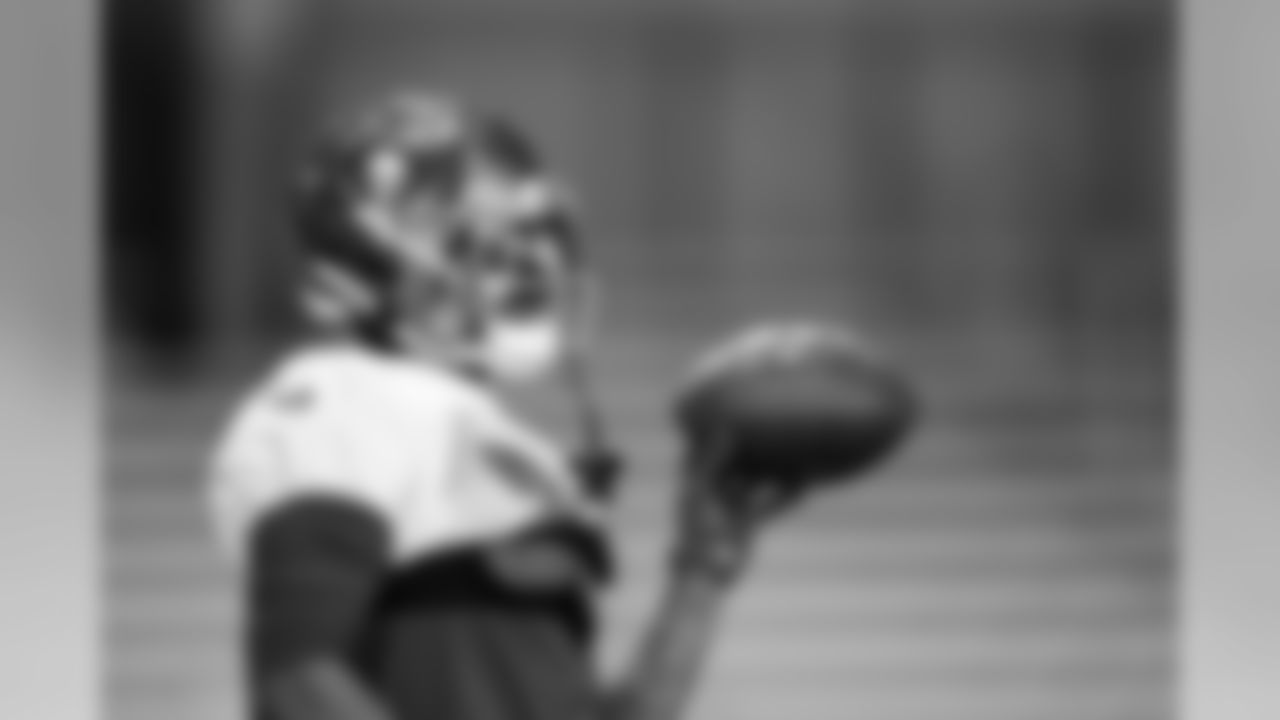








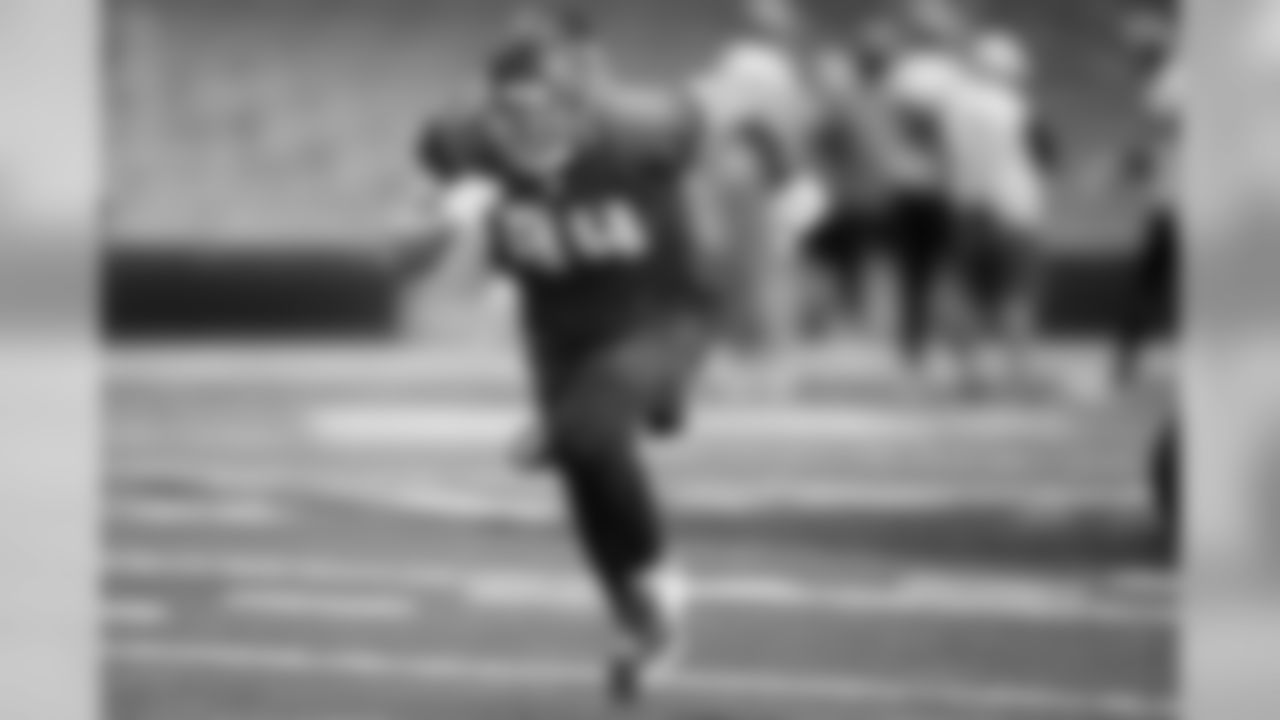













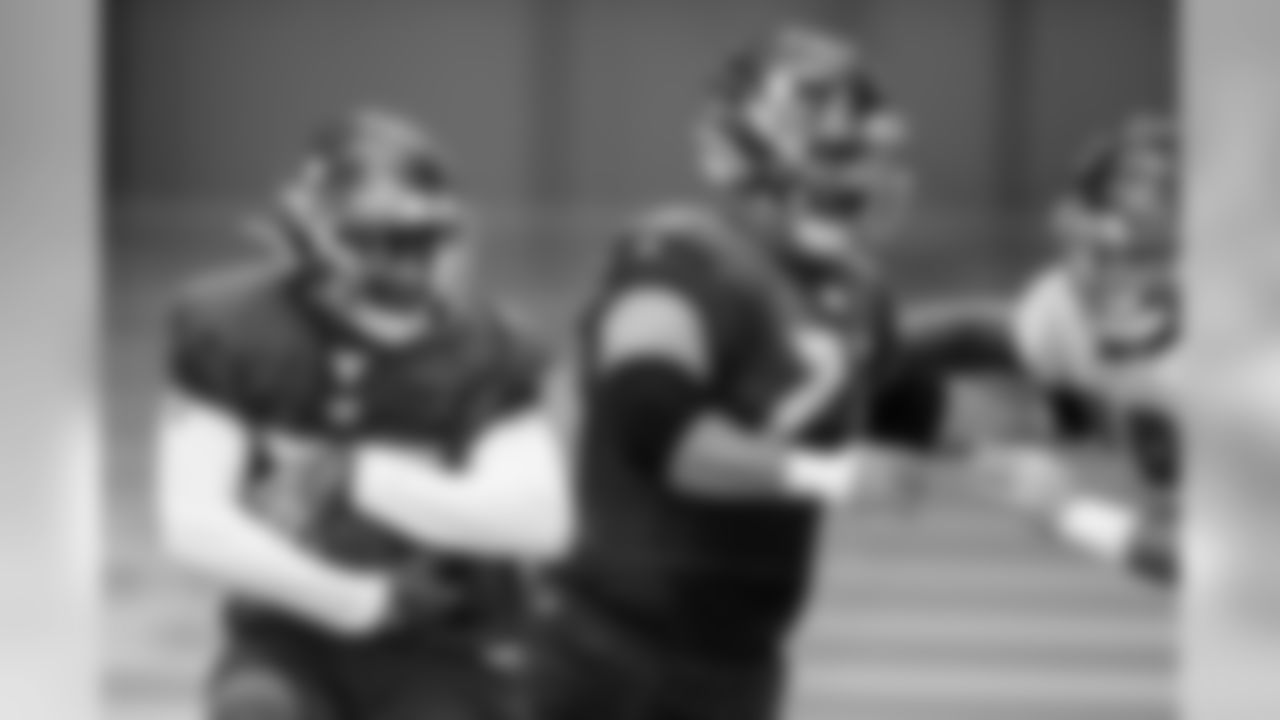



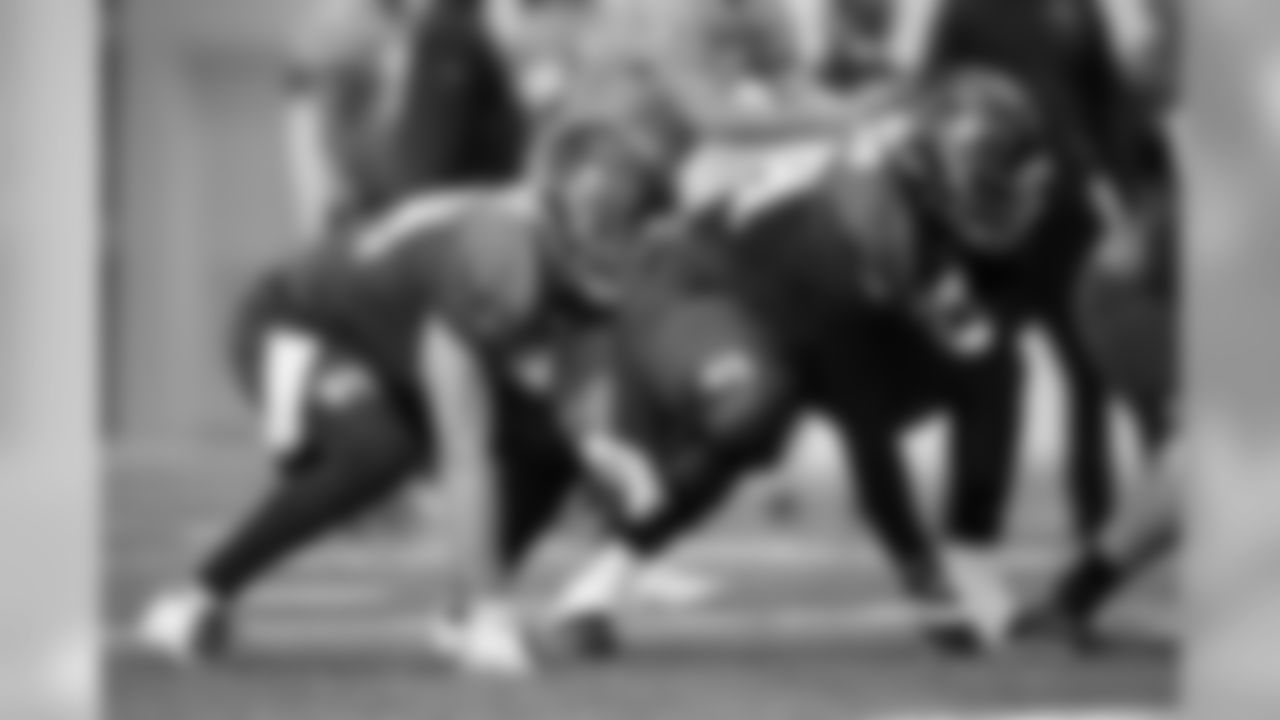






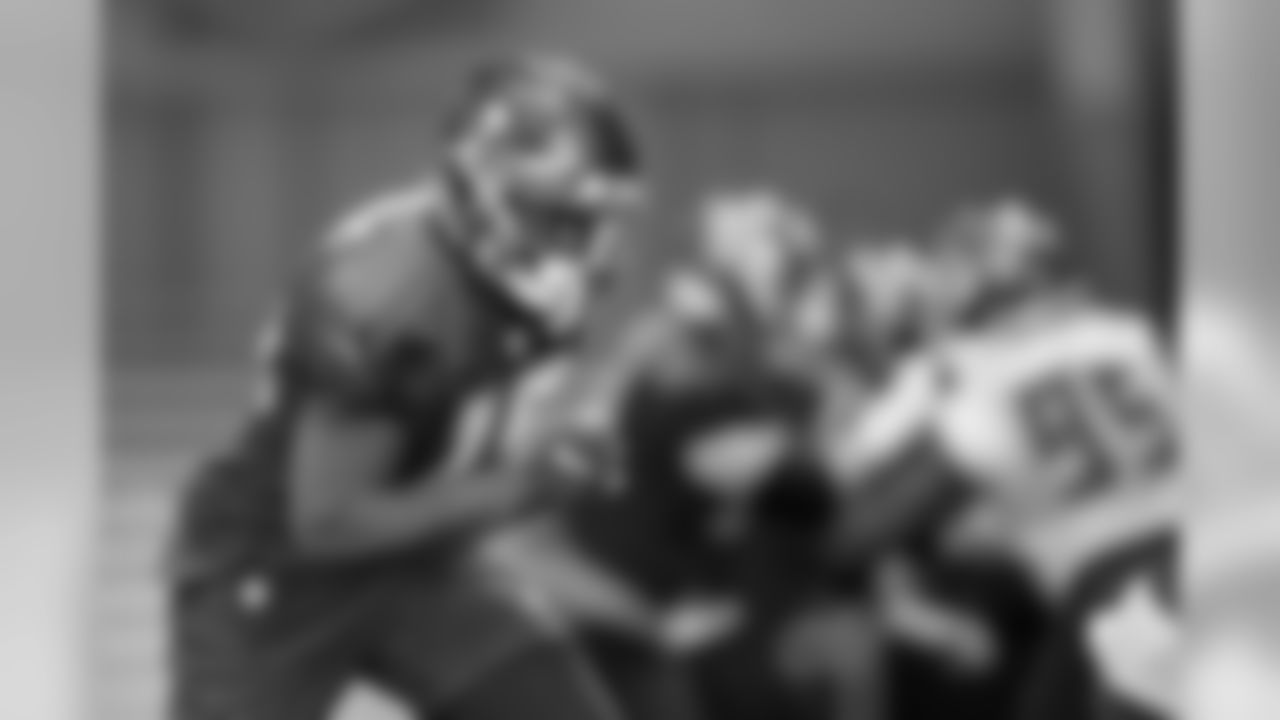



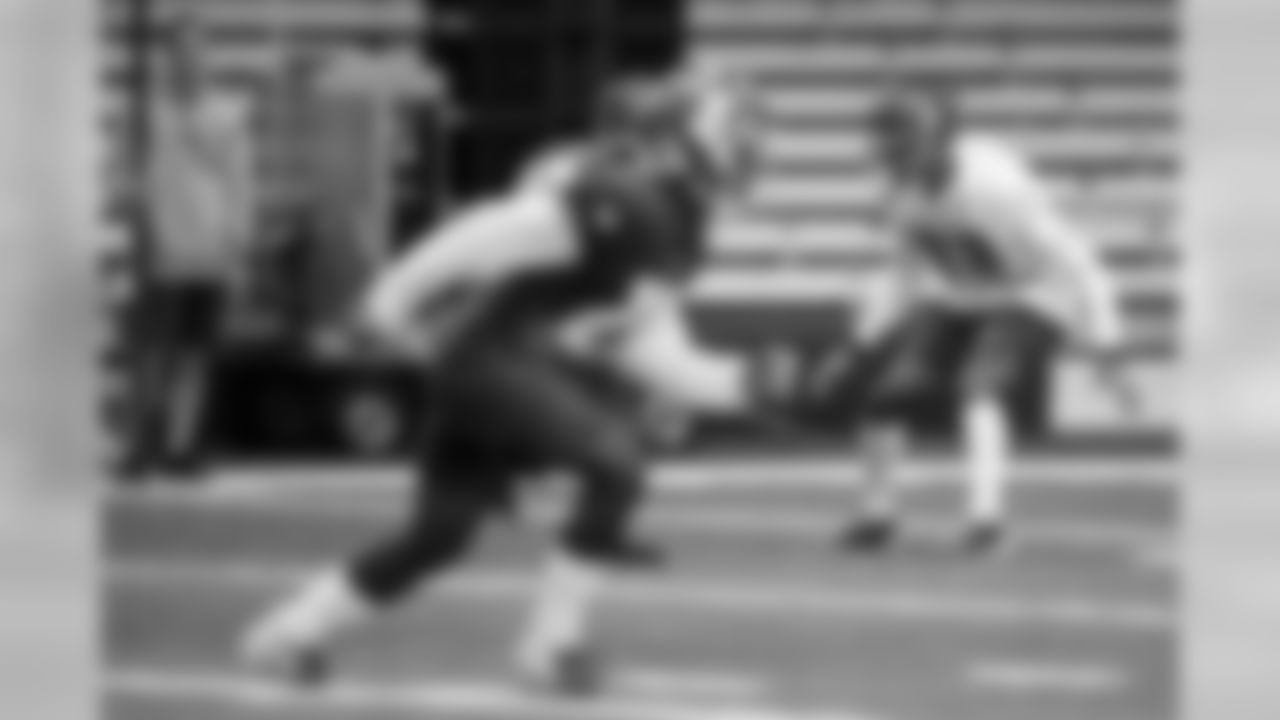



How much of an accomplishment was Vita's "largest man to score a touchdown" achievement?
- Just_Justin_Things, via Instagram
To be honest, I find it to be a kind of gimmicky note, and I don't have much faith that we really know it's true. I think it can be more vaguely applied and be a complimentary thing about Vea – he surely is one of the biggest NFL players ever to score a touchdown, and that's the really big guys aren't usually as nimble or sure-handed as the smaller skill-position guys. So if we're meant to take this is as a, 'Wow, Vita Vea is really athletic for a guy his size,' kind of thing, then fine, good point. I agree.
Of course, we pretty much already knew this, and it's the reason he was drafted 12th overall in 2018. If you haven't seen the footage of Vea as a high school running back, do yourself a favor and check it out. And if you don't come away from that video with an immense feeling of pity for those 150-pound high school safeties then you're not really human.
I guess this kind of note is generated by someone with an access to a database, in which the stats associated with players also include their listed weights. So you can sort the data by weight and then see who's the closest one to the top to score an offensive touchdown. It was the NFL that put this note out after Vea, listed at 347 pounds, caught a one-yard touchdown pass in Atlanta in Week 12, and the claim was that he topped the old record-holder by one pound. That was another interior lineman, Dontari Poe, then of the Kansas City Chiefs, who was listed at 346 pounds when he scored on a one-yard rush in 2015.
The thing is, we're putting a lot of faith in those "listed weights," and I can tell you that those aren't frequently updated at any level of the sport. If you had a roster with heights and weights handy and you took a stroll through an NFL locker room, comparing what's on the paper to what your eyes see, I guarantee you'd have a couple head-scratchers.
Guys are weighed and measured at the NFL Scouting Combine, so it's fair to have faith with the numbers that teams put on their rosters at the beginning of players' careers, assuming those Combine numbers are their source. And that's not always the case, either. More importantly, weights can change throughout a player's career, even during the course of a single season. I'd bet a pretty decent chunk of change that if we asked Mr. Vea to get on a scale right now it wouldn't read exactly 347 pounds. I'm not specifying saying that he's specifically heavier or lighter than that, just that it's probably not exactly 347 pounds.
So to me, it's just a mildly fun note, but I wouldn't put it up next to a real stat like Vea's all-time touchdowns-per-reception percentage, which is tied for the all-time NFL lead at 100%. (Okay, I'm kidding, but that is an actual verifiable number.)
Now, is it a big accomplishment? Sure it is! Vea is just the second defensive player in the Buccaneers' 44-year history to score an offensive touchdown. The other was Warren Sapp, who caught two touchdown passes in a similar way to how Vea scored, and you probably would not have guessed that he finished his Buc tenure with more scores on offense than defense (one).
There's a handful of other non-skill-position players who have scored offensive touchdowns for the Buccaneers, most notably tackle Donald Penn, who did it twice. Other Buc offensive linemen who found the end zone included Ron Heller, Randall McDaniel and Leonard Wester.
What Vea did was impressive precisely because it wasn't all that gimmicky, like the note about his weight is. He was on the field because the Buccaneers coaches think he's the best possible option on the roster for a certain job in the goal-line offense, and that's not even his main job. Several coaches called the pass to Vea a "reward" for the awesome work he's done as a lead blocker, such as his taking out of three Cardinals in rapid success on Peyton Barber's game-winning touchdown run in Week 10.
The smooth route and silky hands displayed on his catch were just more examples of his rare talents, which are rarely doted on by the television cameras the way a touchdown pass will be. Vea does a lot of dirty work in the trenches, and he does it very well. Back in November, ESPN's Bill Barnwell named Vea to his "2019 All-Underrated Team" and had this to say about the Bucs' young star:
"Vea is more realistically an example of the old George Young/Bill Parcells "Planet Theory" approach to the draft, where you recognize that there are only so many 300-plus pound human beings with truly elite athleticism on the planet and draft them when you see them."
Scott….
I hated seeing Godwin and Miller go down in the game Sunday, especially with Mike Evans already out. I'm sure the Bucs will add some receivers to the roster for the last couple games, but realistically what difference could they make? My question to you is, can you think of any times a player came off the street late in a season and immediately made a difference? Thanks from a displaced Bucs fan in Arizona!
- Victor N., via email to tbbsocial@buccaneers.nfl.com
I like the question, Victor, but it's a pretty hard one to research so I hope you're fine with me using the "let's see what I can remember off the top of my head" approach.
The first one that sprang to mind for me was Bobby Rainey, the running back the Bucs claimed off waivers from Cleveland in 2013. I just looked it up and he arrived on October 21, which may not be late enough in the season to really satisfy your question, but he did make a really quick impact. On November 11, he ran for 45 yards and a touchdown, and the next week he carried 30 times for 163 yards and two scores.
Can we include defensive players, because safety Andrew Adams was signed on September 26 just last year and by October 13 he had a five-tackle game for the Bucs' defense, with five more tackles and a forced fumble in his next game.
Micheal Spurlock returned for a second stint in Tampa in December of 2009 and immediately returned a punt for a touchdown in his first game back. But I'll concede that's a lot easier to jump in as a return man than to learn a whole offense on the fly.
I've got to be honest, this is not going all that well. I switched from my "off the top of my head" method to looking through year-by-year December transactions and I just can't find a really great example. Maybe the closest is Tavarres King, a receiver the Buccaneers signed to their practice squad at the end of November and then promoted to the active roster on December 16. He only played two offensive snaps in Week 16 but in Week 17 he was on the field for 59 snaps and contributed two catches for 13 yards.
Vince's email was sent on Monday morning, by the way, so at the time he didn't know who the Buccaneers would be adding, though he was right that they pretty much had to after all those receivers, plus tight end Tanner Hudson, went down with injuries. The eventual signings were wide receivers Cyril Grayson and Spencer Schnell and, off the practice squad, tight end Codey McElroy. None has ever played in a regular-season NFL game before, so it's a mystery what they'll be able to contribute. And maybe they won't be needed for much if Breshad Perriman, Justin Watson, Ishmael Hyman, O.J. Howard and Cam Brate can provide the passing-game production the Bucs need. But as we saw last Sunday in Detroit, those plans can go awry in a hurry with injuries. Maybe one of those newcomers will step up and be the best answer to this question the next time it's asked.


































